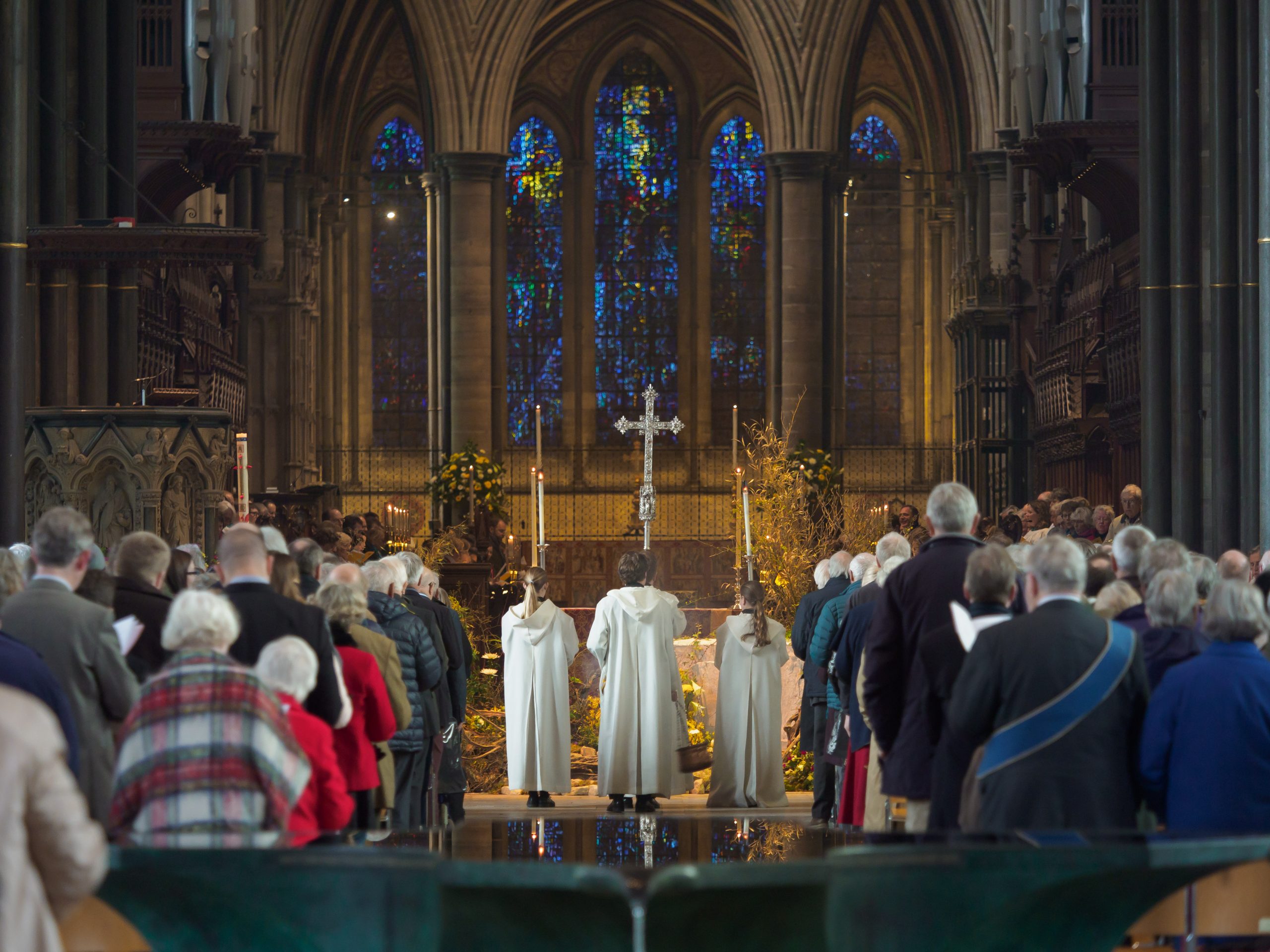Jesus as shepherd, gate and thief

Jesus as shepherd, gate and thief
A sermon on John 10.1-10 by Kenneth Padley
on the Fourth Sunday of Easter, 30th April 2023
Effective religious iconography speaks to a wide range of human circumstances. Today’s peaceful yet powerful image of Jesus as Shepherd is a good example of this. The motif proved popular in the earliest Christian centuries as a Christian alternative to Hermes, a pagan god sometimes depicted carrying a ram on his shoulders. Given that there are not many worshippers of Hermes left, what might it say in 2023? This an annual challenge because the gospel reading on this fourth Sunday of Easter always includes an excerpt about the Good Shepherd from John chapter 10.
Today’s extract was from the opening verses of John 10 and can be broken into two smaller parts.
- Verses 1-6 are a parable about the shepherd who knows his sheep, the sheep who recognise his voice, and the stranger danger posed by thieves and bandits who seek to enter the compound other than through the gate.
- After this, verses 7-10 form Jesus’ initial explication of the parable, a claim that he himself is the gate (or door) of the sheepfold.
- The passage continues beyond what we heard today when in verse 11 Jesus makes that headline claim ‘I am the Good Shepherd’.
We are dealing therefore with one of the famous ‘I am’ passages that are unique to John’s gospel. In each of these, Jesus makes a dramatic contention such as ‘I am the light of the world’ or ‘I am the true vine’. Each offers a distinct disclosure of truth about salvation and the character of Christian community, but they are all grounded in the truth that Jesus is God.
This is because the term ‘I am’ is nothing less than a declaration of divinity. In the book Exodus, God revealed himself to Moses through the burning bush as ‘I am who I am’. The Hebrew verb in this epiphany of God as eternal self-existence is the root of ‘Jehovah’, the name of the Lord which Jews regard as so holy that it is unutterable. Thus the seven ‘I am’ passages of John’s gospel constitute a staggering claim by Jesus that he is God himself.
Some of John’s ‘I am’ sayings are tied to illustrative events where discourse and narrative reinforce one another. For instance, in John 6 Jesus says ‘I am the bread of life’ straight after the miracle of feeding the five thousand. And in John 11 he says ‘I am the resurrection’ shortly before raising Lazarus from the dead. The Good Shepherd discourse lacks an obvious adjacent narrative. However, there is thematic resonance with the end of John’s gospel when the risen Jesus instructs St Peter to ‘feed his flock’. This Easter context of Jesus’ pastoral instruction to Peter (and to us his Church) may explain why the so-called Good Shepherd Sunday always falls within the Easter season.
So much for general context. Let’s drill down onto two features of today’s reading which set it apart from the other six ‘I am’ sayings in John’s gospel.
Firstly, John chapter 10 uniquely contains two ‘I am’ statements. In verse 7 Jesus says ‘I am the gate’ and then four verses later he says ‘I am the Good Shepherd’. This may read to us as odd, as if Jesus is claiming mutually exclusive roles. However, in ancient Palestine, the
shepherd was also a gate. Sheep pens were built with walls on three sides and a gap in the fourth. The animals were corralled through the gap and, overnight, the shepherd would block the entrance with his body so that the sheep might not wander and threats might not intrude. In my previous parish we once acted this out during an all age service when a random selection of the congregation were sent bleating into sanctuary before the children’s church leader laid across the opening in the altar rails, trapping the sheep in the area beyond.
We’re not going to reconstruct this today; I hope I have said enough to show that Jesus the Good Shepherd by day is also the Gate by night. My friends, we have a 24/7 God, a Lord whose model of sacral kingship is both leadership and defence. He precedes us in the challenges of daily life. He seeks the best for each of us and guides us to those places of spiritual and physical refreshment likened to still waters in Psalm 23. But then, equally, Jesus knows what imperils us and so, as a defensive barrier, protects us from that which makes for our spiritual detriment. In his sermon last Tuesday on St Mark’s Day, guest preacher Canon Simon Everett spoke powerfully about addictive behaviours which impede our relationship with God and one another. Those are the sort of things which Jesus the Gate longs to shut out from our lives. He exercises this ministry of dissuasion through the preaching of the gospel, through the inner promptings of our conscience, and through the counsel of wise friends.
The second distinct feature of today’s ‘I am’ passage is that it builds the metaphor for Jesus in part by telling us what he is not. As the Gate, Jesus contrasts his behaviour with that of secretive thieves and violent bandits (verse 8). This is an allusion to a prophecy in Ezekiel 34 which derides corrupt religious leaders as bad pastors. By contrast, Jesus as Good Shepherd looks out for the interests of the flock and not his own aggrandisement. Ultimately, we are told, the Good Shepherd will sacrifice his life for the salvation of the sheep.
In John chapter 10, Jesus is therefore the antithesis of the thief. Nonetheless, with the extraordinary pliability of religious language, the same community which wrote John’s gospel also generated the book Revelation where on two occasions Jesus positively compares himself to a thief. Be alert Jesus tells the Christians of Sardis in Revelation 3.3. ‘If you do not wake up, I will come like a thief, and you will not know at what hour I will come to you.’ The message of John 10 is one of reassurance. By contrast, the exhortation of Revelation is to attentiveness.
The point is this: the Bible is not contradictory. Nor should we approach it with a spirit of subjectivity, of eisegesis – reading into the text what we want to hear. Rather, when read Scripture with a spirit of prayerful exegesis, we read from the text what we need to hear.
Eight billion people on earth face the supreme oneness of God’s self-existence from their own unique perspectives. And the God who is ‘I am’ looks back, mindful that She knows each sheep by name and our individual needs. Thus the proactive Good Shepherd is also the protective Gate, and the Gate which guards the sheepfold is also the Thief who disrupts the complacent. Christ comes to comfort the disturbed, but also to disturb the comfortable. As individuals and communities, what is the role in which we need Christ to stand among us in his risen presence today?




